real estate trends
Cultivating Thought Leadership: The Progressive Influence on Organizational Culture

Photo by Jon Tyson on Unsplash
The adage, “Thoughts lead to words, words lead to actions,” has never been more relevant. Building an organizational culture that thrives, particularly in Multifamily, requires understanding this concept. It requires leadership.
Leadership in multifamily starts from the ground up, with one’s thoughts. These thoughts, often influenced by daily experiences, external stimuli, or ingrained beliefs, shape the words we speak and, in turn, our actions. They set the tone for an organization’s culture, sculpting it into a masterpiece or leaving it disjointed.
However, with the constant influx of information in our digital age, it’s easy for leaders to become inundated with countless ideas, some of which might not align with the organizational vision. Therefore, it’s crucial to protect and cultivate the right thoughts.
For multifamily types, this starts by regularly consuming knowledge, insights, and trends in the real estate space. By keeping abreast of the latest advancements in leadership, organizational development, operational theory, and technology, you can better tailor your thoughts toward progress.
Also, safeguarding one’s thoughts isn’t a solo endeavor. Surrounding oneself with forward-thinking peers, mentors, and advisors is paramount. These individuals can challenge pre-existing notions, introduce new perspectives, and even provide a sanctuary of visionary thinking.
Once a leader has cultivated and protected the right thoughts, the words will naturally follow. In multifamily leadership, words hold immense power. They can inspire teams, build confidence in stakeholders, and craft narratives that appeal to a diverse clientele. But remember, while words hold the potential to inspire, they also have the power to detract. Hence, leaders should be deliberate in their communication, emphasizing transparency, clarity, and sincerity.
And from these words spring actions. In the leadership world, actions resonate. They manifest as innovative marketing strategies, impactful technology deployments, or even revamping operational methodologies. It’s through these actions that organizational culture is genuinely built.
To sum it up, leaders in the multifamily must recognize the interconnectedness of thoughts, words, and actions. By understanding and protecting the source – our thoughts – leaders can effectively build an organizational culture that not only stands the test of time but also elevates the multifamily as an industry.
Share this:
Reviving Organizational Pulse: The Risk Imperative

Photo by Cristofer Maximilian on Unsplash
In an age where rapid tech advancements, swift paradigm shifts, and risk-taking define the business landscape, the words of Elon Musk strike an almost haunting chord. “This is how civilizations decline. They quit taking risks. And when they quit taking risks, their arteries harden. Every year, there are more referees and fewer doers. When you’ve had success for too long, you lose the desire to take risks.”
If we distill this sentiment, it cautions against the dangers of complacency and underscores the inherent value of risk-taking in organizational growth. As leaders in the multifamily space, the resonance is palpable. Here’s why.
The absence of risk can spell stagnation. Historical success, while validating, can often blind one to the changing needs and evolving paradigms of the industry. The more we nestle in our comfort zones, banking on tried and tested methods, the more we stand to lose touch with the ever-changing reality of business.
Musk’s mention of “more referees and fewer doers” is particularly compelling. We are often mired in layers of bureaucracy of our own making. While governance and oversight are crucial, an overemphasis can stifle innovation. If every novel idea must pass through an exhaustive series of approvals, the spirit of entrepreneurship within the organization diminishes. Those passionate “doers” find their energies curbed, their innovations quelled. We must think about freedom within a framework to ensure we don’t stall the organization.
Human-centric leadership thrives on understanding people’s aspirations, challenges, and needs. It’s about intuiting future trends, predicting shifts in consumer behavior, and acting on these insights with agility. This requires the courage to take risks and the vision to see where these risks could lead. We must have the freedom to think and, more importantly, act. We must be open to change.
Yet, to drive this change, leaders must foster a culture that celebrates risk. This doesn’t mean recklessness but rather a calculated approach to innovation, where the potential for growth and the impact on the human experience are at the forefront of decision-making. Organizations should be sanctuaries for creative thought, where the fear of failure doesn’t overshadow the thrill of the possible. In a former life, we were governed by a value that fits this thought – Take Educated Risks.
While stability and consistency have their merits, the true advancement of any organization or leader lies in embracing risk. In that risk lies the promise of growth and novel ways of doing things. As multifamily leaders, let us not be content with past glories. Instead, let’s seize the future, one risk at a time.
Share this:
Why did you lease?

In the dynamic realm of multifamily real estate, understanding why individuals call a property their home is crucial for growth and success. Traditional marketing strategies often analyze why prospects did not lease, yet there is a transformative opportunity in shifting this perspective. By asking new residents why they lease, we can uncover invaluable insights that affirm our strengths and provide a robust foundation for strategic marketing efforts.
This approach fosters a paradigm shift in how we perceive and utilize resident feedback. It’s a move from a deficit-oriented perspective to an asset-based mindset. This transition is not merely a change in technique but a profound cultural evolution within the organization. It signifies a commitment to celebrating and building upon what works rather than solely fixating on shortcomings.
The insights gained from new residents are a treasure trove of information. They offer a direct window into the most appealing factors about our properties, be it the location, amenities, community atmosphere, or customer service excellence. Understanding these key drivers of satisfaction enables us to tailor our marketing strategies more effectively, ensuring that we highlight these strengths in our outreach to potential residents.
Moreover, this strategy aligns perfectly with the human-centric approach to leadership. It involves listening to and valuing the voices of those who have chosen to become part of our communities. This enhances our marketing efforts and contributes to building a vibrant, engaged community. When residents feel heard and valued, it fosters a sense of belonging, critical for retention and word-of-mouth referrals.
Implementing this strategy requires a systematic approach to gathering and analyzing feedback. This might involve post-move-in surveys, informal conversations, or community events designed to engage residents in sharing their experiences. The key is to ensure that this feedback is collected and actively used to inform marketing strategies and operational improvements.

